
HM Prison Dartmoor is a Category C men's prison, located in Princetown, high on Dartmoor in the English county of Devon. Its high granite walls dominate this area of the moor. The prison is owned by the Duchy of Cornwall, and is operated by His Majesty's Prison Service.

1815 (MDCCCXV) was a common year starting on Sunday of the Gregorian calendar and a common year starting on Friday of the Julian calendar, the 1815th year of the Common Era (CE) and Anno Domini (AD) designations, the 815th year of the 2nd millennium, the 15th year of the 19th century, and the 6th year of the 1810s decade. As of the start of 1815, the Gregorian calendar was 12 days ahead of the Julian calendar, which remained in localized use until 1923.

Hogan's Heroes is an American television sitcom set in a prisoner-of-war (POW) camp in Nazi Germany during World War II, which concerns a group of Allied prisoners who use the POW camp as an operations base for sabotage and espionage purposes directed against Nazi Germany. It ran for 168 episodes from September 17, 1965, to April 4, 1971, on the CBS network, the longest broadcast run for an American television series inspired by World War II.

Colditz Castle is a Renaissance castle in the town of Colditz near Leipzig, Dresden and Chemnitz in the state of Saxony in Germany. The castle is between the towns of Hartha and Grimma on a hill spur over the river Zwickauer Mulde, a tributary of the River Elbe. It had the first wildlife park in Germany when, during 1523, the castle park was converted into one of the largest menageries in Europe.
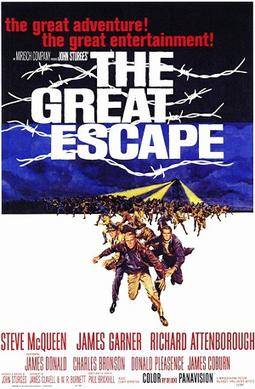
The Great Escape is a 1963 American epic war suspense adventure film starring Steve McQueen, James Garner and Richard Attenborough and featuring James Donald, Charles Bronson, Donald Pleasence, James Coburn, Hannes Messemer, David McCallum, Gordon Jackson, John Leyton and Angus Lennie. It was filmed in Panavision, and its musical score was composed by Elmer Bernstein.
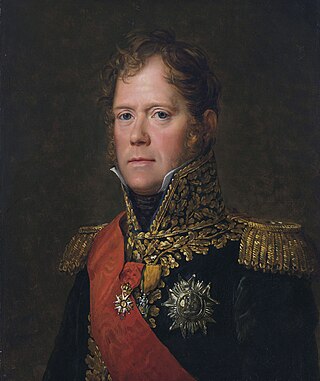
Michel Ney, 1st Prince de la Moskowa, 1st Duke of Elchingen, was a French military commander and Marshal of the Empire who fought in the French Revolutionary Wars and the Napoleonic Wars.
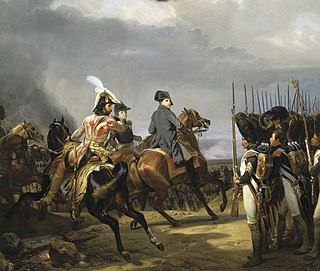
The twin battles of Jena and Auerstedt were fought on 14 October 1806 on the plateau west of the river Saale in today's Germany, between the forces of Napoleon I of France and Frederick William III of Prussia. The defeat suffered by the Prussian Army subjugated the Kingdom of Prussia to the French Empire until the Sixth Coalition was formed in 1813.
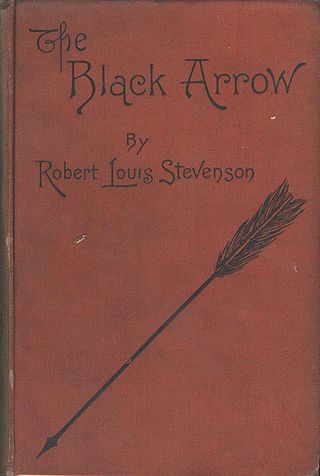
The Black Arrow: A Tale of the Two Roses is an 1888 novel by Robert Louis Stevenson. It is both a historical adventure novel and a romance novel. It first appeared as a serial in 1883 with the subtitle "A Tale of Tunstall Forest" beginning in Young Folks; A Boys' and Girls' Paper of Instructive and Entertaining Literature, vol. XXII, no. 656 and ending in vol. XXIII, no. 672 —Stevenson had finished writing it by the end of summer. It was printed under the pseudonym Captain George North. He alludes to the time gap between the serialisation and the publication as one volume in 1888 in his preface "Critic [parodying Dickens's 'Cricket'] on the Hearth": "The tale was written years ago for a particular audience..." The Paston Letters were Stevenson's main literary source for The Black Arrow. The Black Arrow consists of 79,926 words.

St. Ives is a 1998 television film based on the unfinished Robert Louis Stevenson novel of the same name. The film stars Miranda Richardson, Anna Friel, Richard E. Grant and Jean-Marc Barr.

The Secret War of Harry Frigg is a 1968 American comedy war film set in World War II. It was directed by Jack Smight and stars Paul Newman.

Charles Henry Pywell Daniell was an English actor who had a long career in the United States on stage and in cinema. He came to prominence for his portrayal of villainous roles in films such as Camille (1936), The Great Dictator (1940), Holiday (1938) and The Sea Hawk (1940). Daniell was given few opportunities to play sympathetic or 'good guy' roles; an exception was his portrayal of Franz Liszt in the biographical film of Robert and Clara Schumann, Song of Love (1947). His name is sometimes spelled "Daniel".
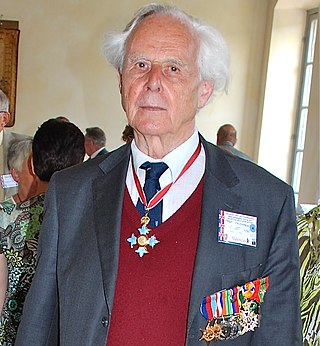
Michael Richard Daniell Foot, was a British political and military historian, and former British Army intelligence officer with the Special Operations Executive during the Second World War.
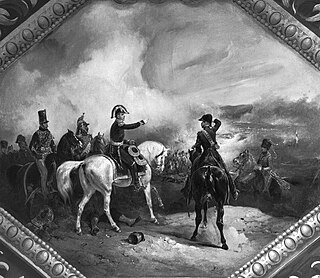
The Battle of Haslach-Jungingen, also known as the Battle of Albeck, fought on 11 October 1805 at Ulm-Jungingen north of Ulm at the Danube between French and Austrian forces, was part of the War of the Third Coalition, which was a part of the greater Napoleonic Wars. The outcome of this battle was a French victory.

The Ulm campaign was a series of French and Bavarian military maneuvers and battles to outflank and capture an Austrian army in 1805 during the War of the Third Coalition. It took place in the vicinity of and inside the Swabian city of Ulm. The French Grande Armée, led by Napoleon, had 210,000 troops organized into seven corps and hoped to knock out the Austrian army in the Danube before Russian reinforcements could arrive. Rapid marching let Napoleon conduct a large wheeling maneuver, which captured an Austrian army of 60,000 under General Mack on 20 October at Ulm. The campaign is by some military historians regarded as a strategic masterpiece and was influential in the development of the Schlieffen Plan in the late 19th century. Napoleon himself wrote:

Oflag IV-C, often referred to by its location at Colditz Castle, overlooking Colditz, Saxony, was one of the most noted German Army prisoner-of-war camps for captured enemy officers during World War II; Oflag is a shortening of Offizierslager, meaning "officers' camp".
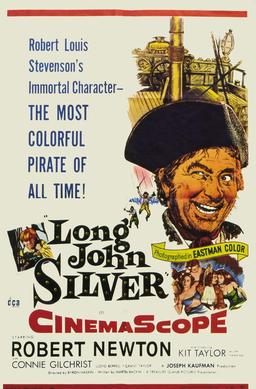
Long John Silver, also known as Long John Silver's Return to Treasure Island, is a 1954 American-Australian adventure film about the eponymous pirate Long John Silver, with Robert Newton repeating his starring role from Walt Disney's 1950 feature Treasure Island. Newton's billing in the opening credits states, "Robert Newton as Robert Louis Stevenson's immortal", followed by the title Long John Silver, presenting Robert Louis Stevenson's immortal Long John Silver as another of the film's alternate titles.

St. Ives: Being The Adventures of a French Prisoner in England (1897) is an unfinished novel by Robert Louis Stevenson. It was completed in 1898 by Arthur Quiller-Couch.

Auguste François-Marie de Colbert-Chabanais, Comte de l'Empire joined the French army during the French Revolutionary Wars. He became a general officer of cavalry during the Napoleonic Wars and fought in several major battles under Emperor Napoleon I of France in 1805–1807. He was killed by a long-range shot fired by a British rifleman during the Peninsular War in 1809.

The Battle of Winterthur was an important action between elements of the Army of the Danube and elements of the Habsburg army, commanded by Friedrich Freiherr von Hotze, during the War of the Second Coalition, part of the French Revolutionary Wars. The small town of Winterthur lies 18 kilometers (11 mi) northeast of Zürich, in Switzerland. Because of its position at the junction of seven roads, the army that held the town controlled access to most of Switzerland and points crossing the Rhine into southern Germany. Although the forces involved were small, the ability of the Austrians to sustain their 11-hour assault on the French line resulted in the consolidation of three Austrian forces on the plateau north of Zürich, leading to the French defeat a few days later.
The French Mistress is a comedy play by the British entertainer Sonnie Hale under the pen name Robert Munro about the arrival of a new young French teacher at a traditional public school.



















